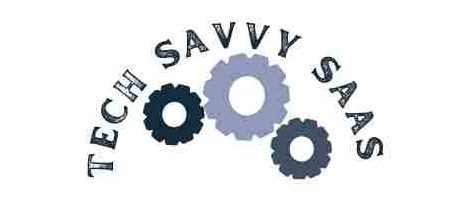The importance of sustainability has surged within the business landscape. As corporations recognize the need for responsible and eco-conscious practices, a significant shift towards environmentally friendly initiatives has taken place. One pivotal aspect driving this transformation is the emergence of green IT certification.
Green business certification, sustainable certification, and sustainability certification have become key phrases echoing across boardrooms and organizational strategies. These certifications represent a commitment to fostering a greener, more sustainable future. In this context, even nonprofit-certified businesses are recognizing the profound impact they can have on the environment.
As we delve into the concept of green IT certification, it’s imperative to grasp the profound environmental impact these certifications can have. They extend beyond mere accolades and badges, playing a crucial role in shaping businesses into responsible stewards of the planet.

Green IT certifications
In the realm of sustainability, green IT certifications stand out as crucial benchmarks, guiding businesses towards environmentally conscious practices. To gain a deeper understanding, let’s explore the certification standards and programs that shape this transformative landscape.
A spectrum of certifications is available, each with its own unique focus on promoting green initiatives. From ensuring energy efficiency to endorsing sustainable business practices, these certifications play a pivotal role in shaping the future of businesses.
Different certifications are available.
Green certifications encompass a wide array of designations, each tailored to address specific aspects of sustainability. These include green business certifications, which focus on overall sustainable business practices, and certifications specifically for green buildings.
Overview of Prominent Certification Programs
- LEED (Leadership in Energy and Environmental Design): LEED, a globally recognized certification, sets the standard for sustainable building and design. It covers various aspects, including energy efficiency, water conservation, and indoor air quality.
- Energy Star: This certification emphasizes energy efficiency in products and buildings. Earning the Energy Star label signifies adherence to stringent energy performance criteria.
Green Building Rating
The concept of green building rating is integral to many certifications. It involves evaluating the environmental performance of buildings based on factors such as energy usage, water consumption, and material selection.
Emphasis on Energy Efficiency
Energy efficiency is a common thread among these certifications. Businesses are encouraged to adopt practices and technologies that minimize energy consumption, contributing to both cost savings and environmental conservation.
Certification Process
Understanding the certification process is fundamental for businesses aspiring to adopt green practices. It involves a structured approach, including assessments, audits, and compliance checks to ensure adherence to the established standards.
Navigating the Energy Star Certification Process
For instance, the Energy Star certification process involves rigorous testing and verification to confirm that products or buildings meet the specified energy efficiency criteria. This ensures that businesses not only claim sustainability but also actively demonstrate it through verified processes.
Benefits of Green IT Certifications for Businesses
Embracing green IT certifications extends far beyond the mere acquisition of a label. The advantages are multifaceted, offering businesses a pathway to responsible, sustainable practices.
Positive Impact on the Environment
The foremost benefit of obtaining green IT certifications is the undeniable positive impact on the environment. Certifications such as those endorsed by the Green Business Bureau ensure that businesses adhere to practices that minimize their ecological footprint. This includes energy-efficient operations, sustainable resource usage, and waste reduction initiatives, all of which contribute to a healthier planet.
Cost savings and efficiency improvements
Contrary to misconceptions, going green can be financially rewarding for businesses. Certification systems guide organizations in streamlining their processes to enhance efficiency. By adopting energy-efficient technologies and sustainable practices, businesses not only contribute to a healthier environment but also realize substantial cost savings in the long run.
Enhanced Corporate Image and Reputation
A green certification isn’t just a badge; it’s a statement about a company’s values. Businesses that prioritize sustainability and obtain professional certifications in green practices often enjoy an enhanced corporate image and reputation. Consumers, investors, and partners increasingly value companies that are socially and environmentally responsible. Green certifications serve as tangible proof of a commitment to ethical business practices.
Environmental Performance Measurement
Certifications play a crucial role in environmental performance measurement. By adhering to established standards and rating systems, businesses can quantifiably showcase their dedication to sustainability. This, in turn, provides a competitive edge as clients and customers seek out companies aligned with their values and environmental concerns.
Tips for Businesses
In the fast-paced world of business, adopting quick tips for sustainable practices can make a significant impact on both the environment and the bottom line. Let’s delve into actionable strategies that businesses can implement immediately.
Implementing energy-efficient practices
The first and most fundamental step towards sustainability is implementing energy-efficient practices. This involves optimizing energy consumption, leveraging energy-efficient technologies, and adopting renewable energy sources. By reducing energy usage, businesses not only contribute to environmental conservation but also realize substantial cost savings.
Choosing Eco-Friendly Products and Services
Consciously choosing eco-friendly products and services is a pivotal move towards sustainability. Businesses should scrutinize their supply chains and opt for suppliers who prioritize environmentally responsible practices. This extends beyond products to services, ensuring that every aspect of the business aligns with eco-conscious principles.
Incorporating sustainable design and construction practices
For businesses with physical spaces, incorporating sustainable design and construction practices is paramount. This involves utilizing eco-friendly materials, implementing energy-efficient building designs, and seeking certifications such as the Green Seal. Sustainable building practices not only reduce the environmental impact but also create healthier work environments for employees.
Certification System Integration
Integration with a certification system is a strategic move for businesses aspiring to be leaders in sustainability. Whether it’s obtaining certifications for the supply chain, building, or overall business practices, aligning with recognized standards enhances credibility and demonstrates a commitment to environmentally friendly initiatives.
Adopting waste reduction and recycling programs
A cornerstone of sustainable business practices is adopting waste reduction and recycling programs. Businesses generate various types of waste, and minimizing this impact is essential. From reducing single-use plastics to implementing comprehensive recycling programs, every effort contributes to a more circular and sustainable economy.
Supply Chain Sustainability
Considering the supply chain is integral to the overall sustainability strategy,. Businesses should collaborate with suppliers who share a commitment to green initiatives. This involves assessing the environmental impact of the entire supply chain and making informed decisions to promote sustainability.
Green Initiatives for Long-Term Impact
These quick tips are not just short-term fixes but part of a broader strategy for long-term impact. Green initiatives should be embedded in the organizational culture, fostering a commitment to sustainability from the top down.
FAQs
What is the process for obtaining Green IT certification?
For businesses venturing into the realm of sustainability, understanding the process for obtaining green IT certification is crucial. This FAQ aims to demystify the journey, providing insights into the steps, requirements, and best practices.
The certification process involves a series of assessments, audits, and compliance checks. This ensures that businesses meet the specified criteria for sustainable practices. From energy-efficient operations to waste reduction initiatives, a comprehensive evaluation is conducted.
Navigating the certification landscape can be intricate. Businesses seeking green IT certification can benefit from tips to streamline the application process. This includes proper documentation, proactive adherence to standards, and leveraging tools that facilitate the certification journey.
How do green IT certifications benefit businesses?
Understanding the tangible benefits of green IT certifications is pivotal for businesses contemplating the plunge into sustainability. This FAQ provides detailed insights into the advantages of certifications and illustrates their real-world impact.
From cost savings to enhanced corporate image, this section delves into the multifaceted advantages of green IT certifications. It explores how certifications like those endorsed by Green America and Energy Star contribute not only to environmental conservation but also to the financial health of businesses.
To exemplify the benefits, real-world examples of businesses that have thrived after embracing certification programs are presented. These stories highlight the diverse range of sectors and businesses that can benefit from green IT certifications.
Are there specific certifications for different types of businesses?
Recognizing that businesses span various industries, this FAQ addresses the question of whether there are specific certifications for different types of businesses.
Businesses can tailor their sustainability journey by exploring industry-specific certifications. Whether it’s acknowledging social responsibility, achieving Green Globes certification, or aligning with the Stewardship Council, this section offers insights into certifications that resonate with specific business sectors.
Tailoring certification choices based on the nature of the business is a strategic move. This involves understanding the unique needs and challenges of the industry and selecting certifications that align with organizational goals and values.
How do green IT certifications impact product development?
Understanding the transformative role of green IT certifications in product development is crucial for businesses aiming to align their offerings with sustainable practices. This FAQ explores the influence of certifications on eco-friendly product design and development.
Certifications wield substantial influence over the design and development of products. This section delves into how green certifications shape the decision-making process, driving businesses to prioritize environmentally friendly materials, processes, and functionalities.
To illustrate the tangible impact of certifications, this FAQ presents case studies highlighting businesses that have successfully navigated the certification landscape. These real-world examples showcase how product development aligned with green certifications can lead to market success and positive environmental outcomes.
How can businesses communicate their green IT efforts to consumers?
Effectively communicating sustainability initiatives is a pivotal aspect of green IT adoption. This FAQ provides actionable strategies for businesses to transparently communicate their green efforts to consumers, fostering trust and loyalty.
Businesses need to strategically convey their commitment to green IT. This section explores effective communication strategies, including transparent messaging, engaging content, and leveraging digital platforms to reach a wider audience.
Building consumer trust is paramount to the sustainability narrative. This part of the FAQ emphasizes the importance of transparent communication in fostering trust. It also explores how businesses can use certifications, such as the Living Building Challenge and waste certification, to substantiate their claims and build credibility.
Conclusion
In conclusion, the significance of green IT certifications for businesses cannot be overstated. This FAQ series has highlighted the multifaceted impact of certifications, from influencing product development to transparently communicating efforts to consumers.
A brief recap emphasizes the importance of certifications in guiding businesses toward sustainable practices. Whether it’s achieving green certification, adopting eco-friendly product designs, or effectively communicating efforts, certifications play a pivotal role.
Businesses are encouraged to not just view certifications as checkboxes but as integral tools in their journey towards sustainability. Embracing green initiatives goes beyond compliance; it becomes a commitment to a healthier, more sustainable future.
In the grand scheme of things, the long-term positive impact of green IT certifications extends beyond individual businesses. It contributes to a global shift towards responsible environmental stewardship, creating a business world where success and sustainability go hand in hand. As businesses embark on their green journey, the positive ripples will be felt not only in boardrooms but also in the broader world, shaping a more eco-conscious and resilient future.
More Post






